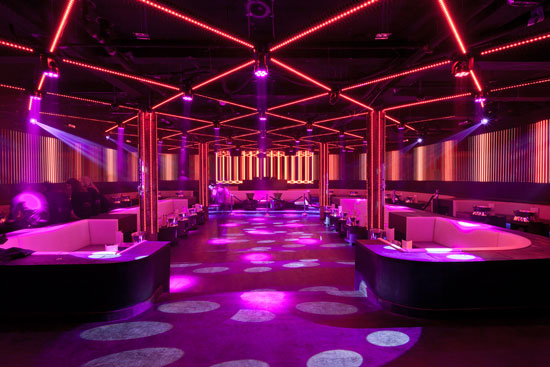The Revolutionary Power in Lighting on Elevating Dancing Area Aesthetics
Wiki Article
Illumination plays a key role in shaping the atmosphere of a dancing area. It can transform a plain space into an thrilling setting that boosts the overall encounter for dancers and audience alike. The correct lighting can affect the vibe, energy, and even the form of the dance being performed. By using multiple types of lighting, such as spotlights, colored illumination, and strobe effects, event organizers can design a dynamic environment that captivates the spectators and encourages participation.

One of the key functions of lighting on a dancing area is to showcase the performers. Spotlights can be used to focus attention on individual dancers or groups, making them the center of attraction. This technique not only showcases their movements but also adds a layer of drama to the performance. When dancers are illuminated effectively, their facial expressions and skills become more visible, allowing the spectators to appreciate their skills. This focused lighting can also help to create a narrative, guiding the audience through the show.
In addition to highlighting performers, colored lights can significantly impact the mood of the dancing area. Various colors elicit varied feelings; for instance, warm colors like crimson and amber can generate a sense of enthusiasm and vitality, while cooler colors like blue and green can promote calmness and relaxation. By strategically using colored lights, event planners can manipulate the environment to align with the concept of the occasion or the type of the performance. This thoughtful approach to lighting design can enhance the complete encounter for all involved.
Flashing lights and other active lighting features can also add thrill to a dancing area. These features can create a sense of rhythm and movement that complements the music being performed. When timed with the rhythm, strobe lights can make the dance floor feel alive, inviting dancers to groove in sync with the pulsing lights. This interaction between light and music can elevate the vitality of the occasion, making it more pleasurable for both performers and spectators. The use of such effects requires thoughtful planning to ensure they enhance rather than divert from the performance.
Finally, the complete setup of the lighting arrangement is essential for click this creating a unified aesthetic on the dancing area. A carefully planned lighting plan considers the layout of the space, the type of performance being executed, and the spectators' experience. By integrating different lighting methods, such as background lighting, accent lighting, and unique features, organizers can design a aesthetically impressive setting. This attention to detail not only improves the show but also creates a lasting impression on the spectators, making the occasion memorable. In conclusion, the powerful influence of lighting is essential in improving dancing area appearance, establishing an captivating and enjoyable experience for everyone.